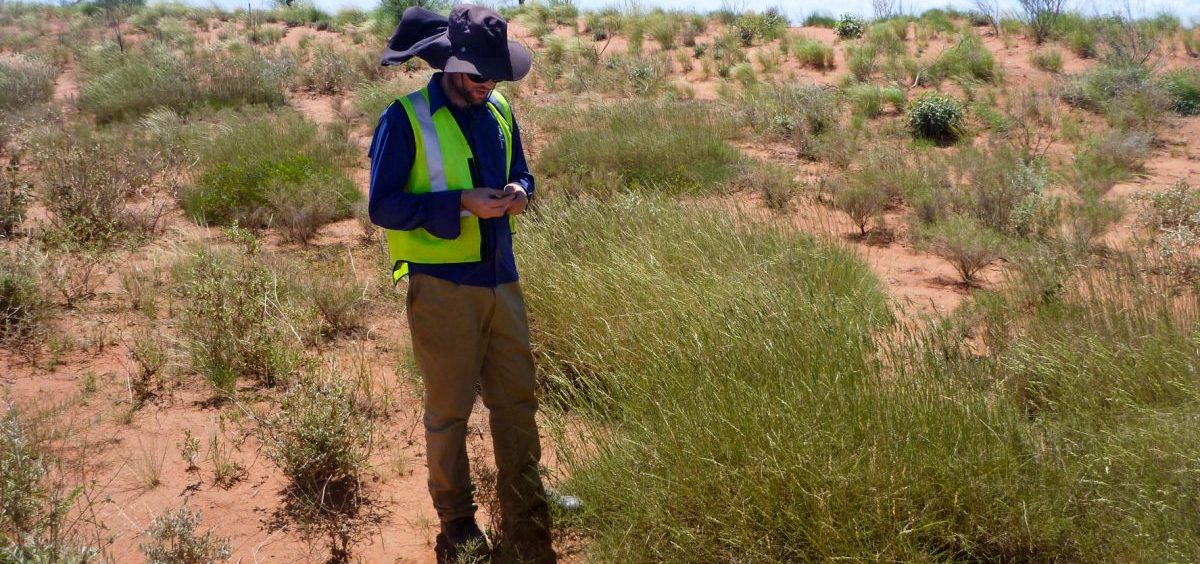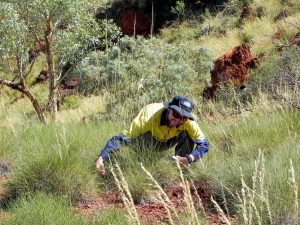News

Scientists Discover Grass Species With Intriguing ‘Salt And Vinegar’ Chip Flavor
By: Angus Chen | NPR
Posted on:
If I spot a blade of interesting-looking grass, my first inclination isn’t to wonder what it tastes like. But a group of researchers in Australia recently stumbled upon two new species of grass with a peculiar flavor that some liken to a favorite snacking combo: salt and vinegar chips.

Anderson and his colleagues were collecting specimens in the Pilbara, a dry and mountainous section of Western Australia, when they stumbled upon the new species. Spinifex grasses mostly grow in spikey humps called hummocks that resemble overgrown, green hedgehogs from far off. If they grow old enough, some spinifex humps will roll outwards to form what looks like a prickly, mouth-bleeding doughnut.
The two new species don’t look all that different from their 70-some cousins, which crowd most of the Australian continent — except for a spray of glistening droplets around their leaves. “We saw it sparkling in the sunlight and just go — oh, that’s interesting,” Anderson says.
But no — they didn’t think to munch on the grass just then.
“It’s probably not the best way to explore the natural world, licking things,” Anderson says.
The tasting happened later, in the lab, while one of Anderson’s graduate advisers was working with samples of the new species. “It wasn’t an intentional like, ‘Let’s lick the grass,” he says. “She touched her hand to her mouth, and she was like, ‘Hey that’s weird.’ That was the first discovery.”
But scientists still don’t know what, exactly, those intriguingly flavored droplets on the grass are.
“We don’t really know why they are there. We don’t know what it does or what it’s for, and we didn’t chemically analyze it or anything,” Anderson says. But they definitely taste like something. “My supervisor was like, ‘Oh yeah, that’s definitely salt and vinegar.’ For me, it was a funky taste,” he says. “It was a neat experience, but it’s not like it made me want to eat it.”
Theories aren’t abounding among scientists, either. Some spinifex species produce a thick resin to keep herbivores away, but that’s not what these droplets are. The fact that the grass is sour is not a useful clue, either.
“Sour taste remains a puzzle to many of us,” says Gary Beauchamp, the emeritus director and president of the Monell Chemical Senses Center. “What exactly the function of acids in plants vis-à-vis taste is really unclear.”
Alas, while it’s tempting to think the grasses could become the next low-fat snack fad, Anderson says his discovery — which he has unofficially dubbed “sparkling spinifex” and officially Triodia scintillans and Triodia Vanleeuwenii — are not likely to become new delicacies.
Spinifex grasses are often so hard and spiky that scientists say it can actually be painful trying to collect samples. They don’t have much nutritional value, and the grasses have no known predators. “Yeah, nothing. It’s of great frustration [to farmers] that so much of the land is dominated by this grass, and cows don’t eat it,” says Rod Fensham, a plant ecologist at the University of Queensland who did not work on the new spinifex species.
Spinifex does have some virtues, though. As the dominant vegetation in most of Australia, it creates a foundation for ecosystems and holds soil erosion at bay. Reptiles, insects and a rare bird called the night parrot make their homes in the arid grass lumps. Humans have used the resinous types of spinifex to create strong adhesives for centuries — but it’s also not for eating.
Aboriginal people in Australia used it as a glue and cement,” Fensham says. “The resin smells not unpleasant, but it’s definitely not something you’d want to stick in your mouth.” The resin can also be processed to make rubbery products like latex condoms thinner and stronger.
There may yet be more spinifex uses to be discovered. Perhaps Anderson’s sparkling spinifex will have some other interesting property, although the unusual taste has captured Fensham’s attention. “I find it a bit curious! I’d love to taste this grass myself,” he says.
9(MDI4ODU1ODA1MDE0ODA3MTMyMDY2MTJiNQ000))

